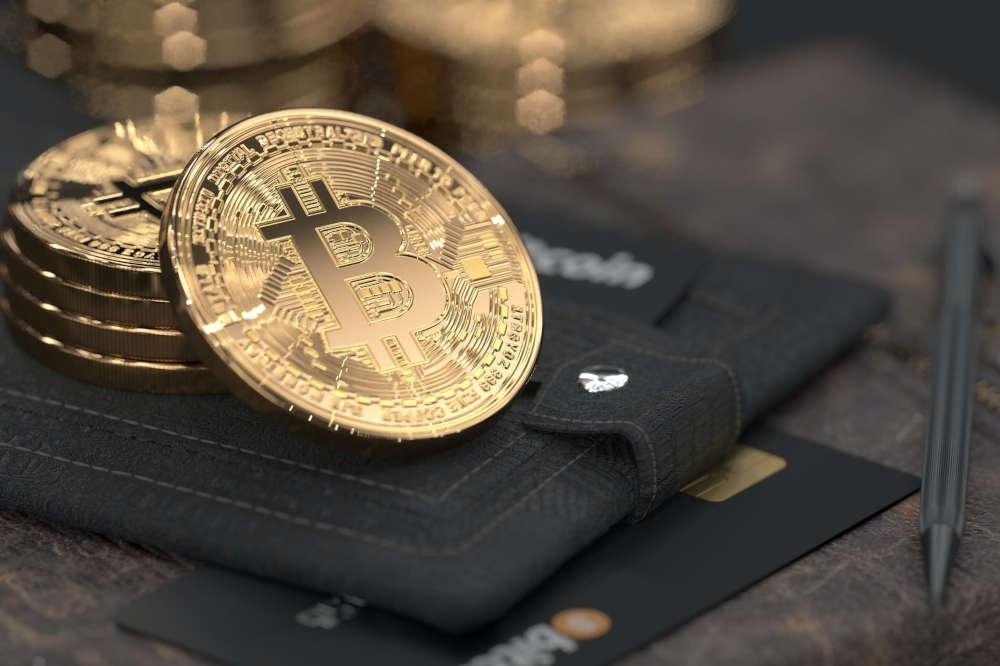Cryptocurrencies and digital currencies like Bitcoin have taken the world by storm. Now, there are thousands of virtual currencies to invest in. All of which have the potential to make investors millions. One of the digital assets that emerged is STOs.
But what is an STO? How did STO emerge? And what role does it play in the world of finance?
This post will give you a crash course in STOs, how they work, and their advantages and disadvantages. Take a break from playing your favourite crypto gambling games at BC.GAME and keep reading to learn more.
What Is An STO?
A Security Token Offering or STO allows financial institutions and start-ups to launch a blockchain-based security (stocks, assets, and more) to raise funds for the company.
Many financial regulatory bodies define securities as contracts between parties that hold a certain monetary value. These include people buying shares in a company. Shareholders receive voting rights and part of the company’s profit. Shares are investments in the future of a real-world company. So, regulatory bodies can define any financial product tied to real-world assets as securities.
A security token is a virtual representation of stocks, real estate, or reserve assets. Unlike utility tokens like Ether (ETH) or Solana (SOL), security tokens hold information about an investment recorded on the blockchain. When investors buy these security tokens, they represent a share in an investment.
For example, when investors buy shares in a company, they receive a digital certificate that holds their information and the number of shares they purchased. When buying a security token, the blockchain records its information on the ledger, and the investor receives a token instead.
A security token might represent pieces of famous artwork. Here, investors can purchase a proportion of the artwork’s value instead of only major venture capital firms bidding for the whole value.
The History Of STOs
To know what an STO is, we need to look at the brief history of ICO and the more protracted history of securities law.
The Howey Test
The history of security token offerings starts with a landmark case: SEC vs Howey. It involves figuring out whether a financial agreement is an investment contract. Howey offered the real estate to their investors. They managed the properties, grew citrus groves, and offered the investors a piece of the profits.
The SEC argued that the real estate agreements were, in fact, securities. This led to the classification of securities under the Howey Test.
If a financial instrument meets three requirements of the Howey Test, it is a security. First, the instrument needs to involve an investment of money. Second, the investment needs to belong to a common enterprise. This means that investors pool their money to invest in a project. Third, a third party manages the pooled investment and distributes the profit to investors.
Over the years, the Howey Test has expanded the term “money” to include other assets. If the investors have no control over the profits from their investments, then the financial instrument is a security.

The ICO Bubble
The rise of STOs comes from the popularity of Initial Coin Offerings (ICOs) from 2016 to 2018. By the beginning of 2018, investments in ICOs grew to over $6.3 billion. Crypto developers held ICOs to raise funds for their crypto tokens. Investors had no issue supporting these new projects, given the success of Bitcoin and Ethereum.
However, the crypto bubble burst at the end of 2018, and the industry’s market cap fell by more than $750 billion. Investors suffered significant losses. Regulatory entities soon took notice of the threat of ICOs to their respective economies.
So, SEC Chief Jayy Clayton stated all ICOs were securities. The FINMA in Switzerland also declared that crypto tokens were securities.
Crypto leaders did not like these declarations and claimed that their tokens were not securities but provided utility on their platforms. This led investors away from investing in ICOs. Their lack of regulatory support and compliance led to the creation of STOs.
What Is An STO’s Technology And Processes?
First, STOs exist on blockchains through smart contracts. Ethereum is the leading blockchain for smart contracts. It has various standards that allow for the creation of smart contract tokens like ERC20 and the security token standard ERC1400.
All documents related to the fundraising and ownership information of an STO exist in smart contracts. Once the company or developer records the information onto the blockchain, no one can change it unless a smart contract dictates it.
Smart contracts do not require a go-between, like a lawyer, to authenticate deals. It can automate contract clauses using Oracles or a relevant third-party source. This saves money and time.
What Is An STO’s Standard Process?
The first step, preparation, involves developing a business plan that promotes the company’s product. These plans highlight the benefits for investors and other relevant information. The amount of information depends on the legal requirements set by a region’s regulatory body.
For example, certain regions allow companies only to sell their tokens to licensed investors.
In the second step, developers and companies must begin designing the token. They must decide its price, quantity, and the rights associated with owning it. They also need to prepare all regulatory requirements.
The third step involves the company finding platforms to launch its token. This includes analysing the best blockchain technology, financial institution partnerships, and custodians to hold on to investor fees.
Step 4, fundraising, begins when the company promotes the token through various meetings and promotional events. They also need to convince their target investors to buy into the token.
Step 5 is listing the token on a trading platform. This means that the token issuer (company) needs to find a suitable trading platform that makes the token available to its investors. They need to maintain liquidity through market makers and clearly state the rollout of token sales.

Types Of Security Tokens
Equity Tokens
Equity tokens work similarly to stocks in traditional financial markets. The difference lies in where companies issue and record ownership information. Equity token information lives on the blockchain. Smart contracts can settle token trading with no intermediaries.
Equity token holders receive a part of a company’s profits and have a right to vote on company-related proposals.
Equity tokens open companies to new kinds of investors by making them available on a decentralised platform.
Because all the information about the token is on the blockchain, regulators can easily assess a company’s compliance with security laws.
Asset-Backed Tokens
Asset-backed tokens differ from equity tokens by how they derive their value. These tokens usually have backing from a real-world asset or commodity. These could be minerals, real estate, or art. They operate the same way as other commodities.
Debt Tokens
Investors can provide a short-term loan to a company. The company receives the loan as a debt token with the repayment agreement deployed on a smart contract. These could be debts like mortgages or bonds. Risk and dividend determine the token’s price, and the smart contract is a debt security.
The Difference Between ICOs / IPOs And STOs
New crypto projects use Initial Coin Offerings (ICOs) to raise funds. They offer investors several tokens. Investors can use these tokens to trade or use on their blockchain platform. Many tokens offer holders ways to access DeFi services or use certain platforms.
Crypto projects release a white paper that details the token’s specifications and the project’s roadmap. They do not need to follow regulatory requirements and many crypto exchanges offer launch pads where crypto start-ups can launch their tokens without needing to abide by security laws.
On the other hand, Initial Public Offerings (IPOs) allow private companies to sell shares in their company before going public. These usually include a prolonged process where the company needs to undergo regulatory checks and release shares according to a dictated schedule. This is a controlled process involving lawyers, financial institutions, and regulatory bodies.
So, what is an STO? It is a combination of ICO and IPO. First, it involves the processes of ICOs and has all the benefits of blockchain technology. Second, it has the security and compliance of an IPO. An STO also has some disadvantages of IPOs because regulation is still a longer process than an ICO.

Advantages Of STOs
An STO’s major advantage lies in its reliance on blockchain technology and its compliance with security laws.
With blockchain technology, token issuers can take advantage of tokenising assets that would be impossible to divide. For example, an issue could tokenise an antique piece of furniture. Instead of selling the entire antique, the issuer could sell tokens representing a portion of that antique’s value.
Smart contracts and the blockchain can record information about the antique’s value. The blockchain can store valuation reports and proofs of authenticity and make them available to all investors. Investors can also trade security tokens 24/7, allowing even more flexibility than traditional stocks.
STOs need fewer go-betweens but still have compliance with security laws. This means that launching an STO for smaller companies costs less and reassures investors who prefer an exchange-traded token. Security tokens can also increase an asset’s liquidity through division.
Disadvantages Of STOs
STO’s compliance with security laws is only one of its major disadvantages. For issuers to meet regulatory requirements, they must submit documents to regulators. Other regions, like Hong Kong, require a physical stamp on their security certificates.
Regulators are creating new requirements for security tokens. These include investors undergoing AML and KYC protocols. This means investors must submit certain documents before trading a security token. Because exchanges allow 24/7 trading, this is a difficult measure to enforce, thus limiting the token’s performance.
Security token issuers rely on centralised services to hold custody of an investor pool. This creates the risk that a hacker might gain access to that service and steal investor funds.

What Is An STO’s Method Of Success?
STOs have only been operating for a brief time. Multiple tokenised shares are available for purchase, including Microsoft, Twitter, and others. The security token’s combined market cap is over $3,743,783,988.27.
This shows that there is already massive adoption from stock-listed companies and crypto companies. But the continued success of the security token industry relies on several factors.
First, there needs to be growth for STO platforms to provide more options to token issuers in the future. Banks and financial institutions must also analyse their assets and commodities and see which can undergo tokenisation.
Second, regulatory bodies need to answer the question: what is an STO? They need to define laws and regulations around the launch of STOs. There needs to be an international standard for tokenised securities, so investors can have fewer limitations when buying tokens.
Third, trading platforms must abide by these new laws and regulations to ensure that investors are protected when buying tokens.
Lastly, investors must educate themselves on digital assets, specifically security tokens. They must understand the risks, benefits, and limitations of investing in these tokens.
Final Thoughts
The question, what is an STO, has an answer layered with history and potential. It came to fruition because of the popularity of cryptocurrency projects. It also became necessary as investors did not trust the crypto environment, as many early adopters lost millions.
STOs can be the answer to the issues with security on crypto exchanges, and they can satisfy regulatory bodies. It needs to improve its ecosystem, formalise regulations, and educate investors on security tokens.














